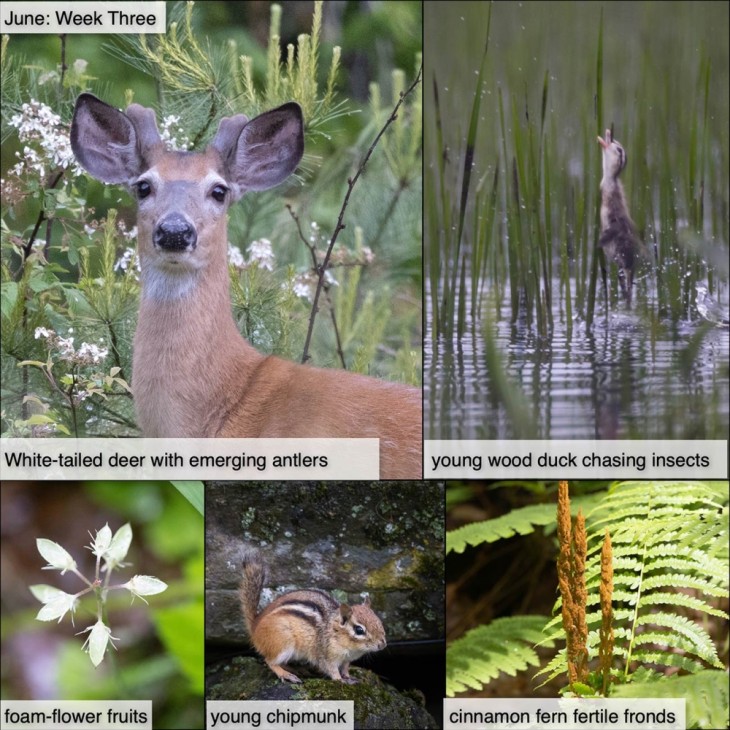This week in the woods, white-tailed deer’s new antlers are becoming more noticeable as they grow. In this buck’s case, his antler nubs have just reached the moment when they touch the back of his ears. In spring and most of summer, bucks’ antlers are relatively soft and full of blood. In late summer, they’ll harden and bucks will begin to “polish” them by rubbing off the protective velvet on trees and other surfaces.
Some birds – think warblers and other songbirds – are altricial. Meaning that their young are completely dependent on their parents to bring them food, keep them warm, and otherwise meet their needs. And then there are precocial species, including this guy. A few hours after hatching, this young wood duck left its nest (often a tree cavity, tens of feet in the air, that it simply hopped out of) and followed its mother to nearby water. It also immediately began feeding itself – as shown here, as it chases insects with gusto. To learn more about the differences between altricial and precocial birds – and how these different strategies work out for different species – check out Chris Rimmer’s article in the summer issue of Northern Woodlands, Young Bird Development and Parental Care: Evolutionary Tradeoffs.
If you’re walking in wet forest, keep an eye out for cinnamon ferns. These ferns get their name from their spiky fertile (spore bearing) fronds, which typically stand in the middle of a stand of sterile green fronds. Not all ferns have separate fertile fronds, by the way. Some are more subtle, for example, by simply bearing spores on the undersides of green fronds. Here’s a blog post about fern spore dispersal by Mary Holland.
The first batch of young chipmunks are out of their burrows, and are distinguishable from their elders by the slightly smaller size, still-short tails, and “wait…predators exist?” naivete. This little guy looks none-too-happy to discover rain.
Finally, if you’re seeing stars in the forest understory this week, you may have found a patch of foam-flower, which has discarded its frothy white blooms and is fruiting now. Foam-flower, by the way, is a good option for native shade gardens.
What have you noticed in the woods this week? Submit a recent photo for possible inclusion in our monthly online Reader Photo Gallery.


